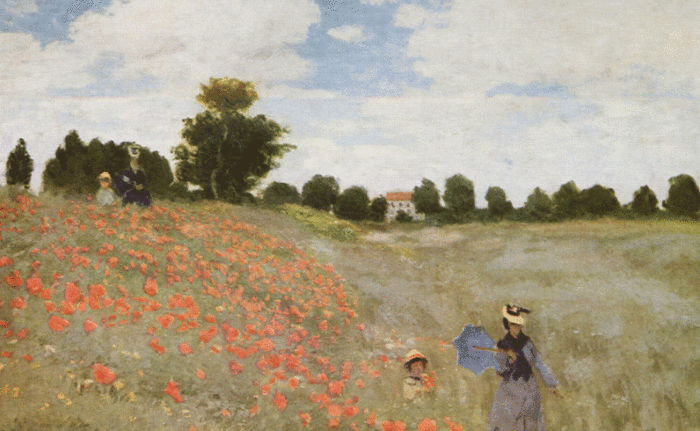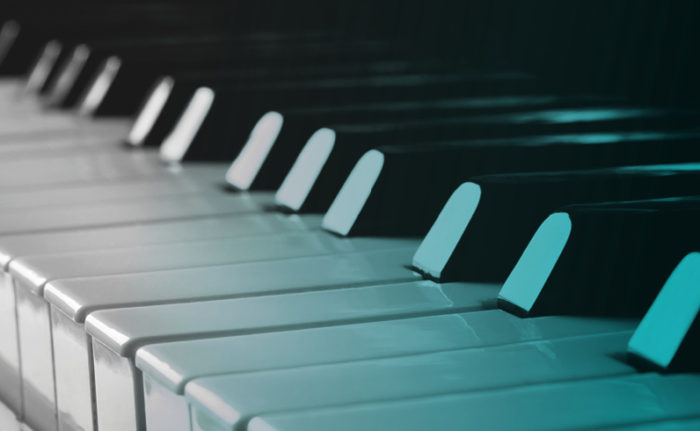On November 15, 16, and 17, acclaimed conductor Fabien Gabel returns to Houston for Ax Plays Beethoven, a program featuring works by Beethoven and Brahms. In this post, discover the hidden meanings in Brahms’ gorgeous Symphony No. 2.
Brahms took at least 14 years to complete his First Symphony (and perhaps more than 20); to a friend, Brahms explained his trepidation by saying “You have no idea what it’s like for [a composer] to always hear such a giant (Beethoven) marching behind him.” Following a Beethovenian path of epic struggle from darkness to light, Brahms’ First Symphony was immediately recognized as a masterpiece upon its premiere in November 1876. This success seems to have lifted a weight from Brahms’ shoulders; he would complete his Second Symphony the following June to October while staying in scenic towns in the Austrian Alps and Bavaria’s Black Forest.
Ever the Joker
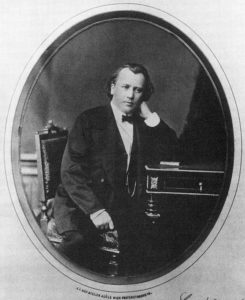
Brahms delighted in teasing his friends with misleading descriptions of his work in progress, which he called “the lovely new monstrosity.” To his publisher, he wrote, “It will at all events be a proper flop, and people will say that this time I took it easy,” and, “The new symphony is so melancholy that you won’t stand it. I have never written anything so sad, so minor-ish: the score must appear with a black border. I have given enough warning. Are you really still proposing to buy yourself such a thing? We can always alter the terms […]”
To his friend Elizabeth von Herzogenberg, he likewise wrote: “The new one, though, is really no symphony, but merely a sinfonietta, and neither do I need to play it for you beforehand. You need only sit down, with your little feet on the two pedals alternately, and strike the F minor chord for a good while, alternately in the bass and the treble, ff and pp—then you will gradually get the clearest picture of the ‘new one.’”
On the contrary, when Brahms’ friend Theodor Billroth heard the actual piece, he declared that “it is all blue sky, babbling of streams, sunshine and cool green shade.” Another friend, Ferdinand Pohl, was happy to inform Brahms’ publisher that in reality “It’s a magnificent work that Brahms is bestowing on the world, and so very accessible as well. Every movement is gold, and all four together constitute a necessary whole. Vitality and strength are bubbling up everywhere, deep feeling and charm to go with it. Such music can only be composed in the country, in the midst of nature.”
Indeed, the symphony’s bright, resonant key of D major and its abundance of lyrical themes combine to make it one of Brahms’ sunniest works, and its remarkable craftsmanship, organic unity of ideas, and harmonic and metrical subtlety make it one of the most impressive symphonies in the repertoire, rather than the lightweight “sinfonietta” the self-deprecating Brahms suggested.
Et in Arcadia ego
Even so, there is perhaps a grain of truth behind Brahms’ joking remarks about the work’s “black border,” as one perceptive early listener noted. After a three note upbeat in the cellos and basses (a motif that permeates the symphony), the horns begin the first movement with a lyrical, pastoral theme:
Note: Felix Weingartner’s interpretation of this symphony is particularly notable because as a young man Weingartner conducted the symphony for Brahms himself, who greatly enjoyed the performance.
Soon after, however, the music fades to an ominous timpani roll, followed by dark harmonies for trombones and tuba. The conductor Vincenz Lachner wrote to Brahms, “Why do you throw into the idyllically serene atmosphere with which the first movement begins the rumbling kettledrum, the gloomy lugubrious tones of the trombones and tuba? […] Must grace be reconciled with strength through something unnerving?…In all, I would prefer the trombones and tuba to be excluded from this movement […]”
With uncharacteristic candor, the normally guarded Brahms responded that “I very much wanted to manage in that first movement without using trombones, and tried to. […] But their first entrance, that’s mine, and I can’t get along without it and thus the trombones. Were I to defend the passage, I would have to be long-winded.
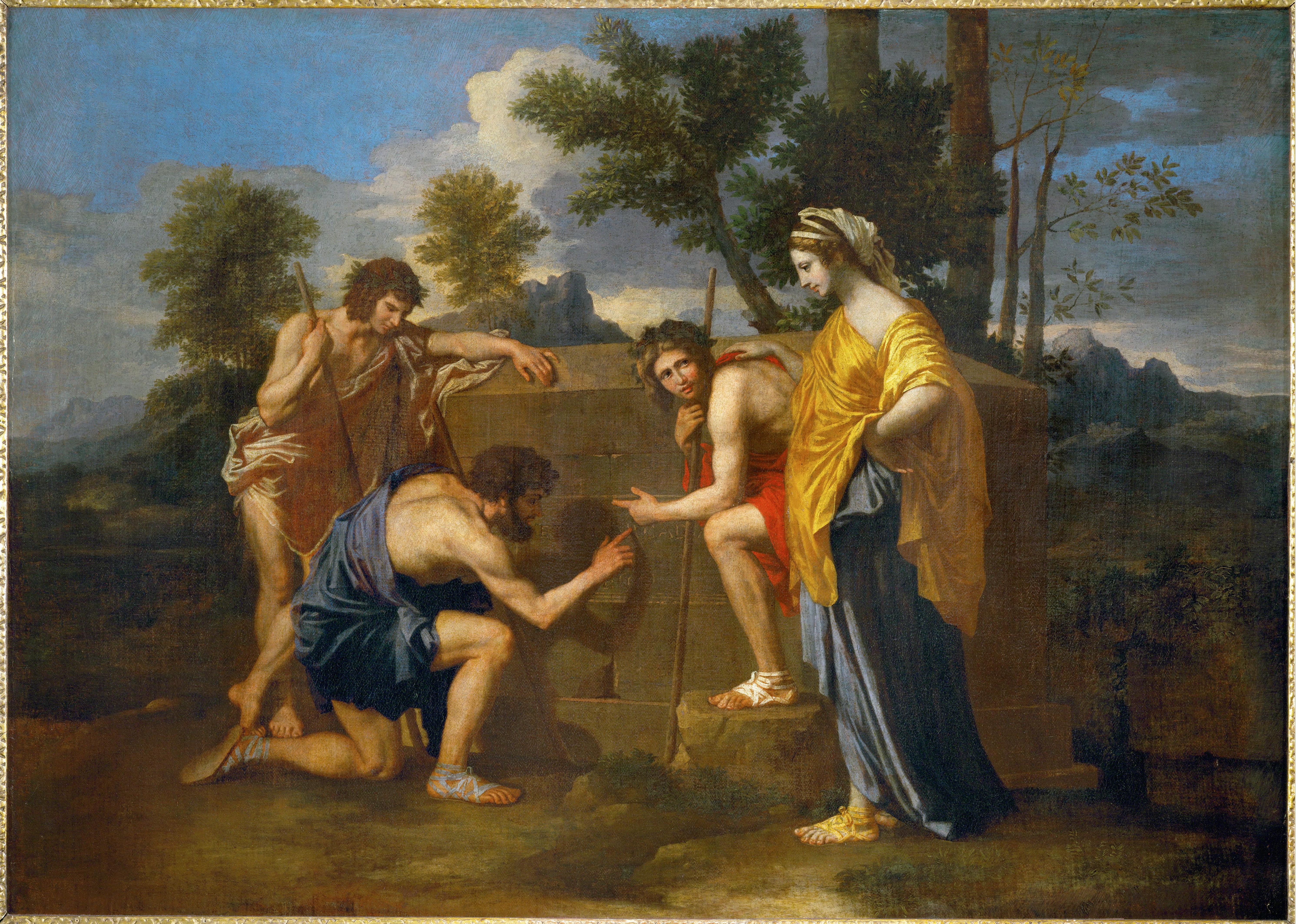
“I would have to confess that I am, by the by, a severely melancholic person, that black wings are constantly flapping above us, and that in my output—perhaps not entirely by chance—that symphony is followed by a little essay about the great ‘Why.’ If you don’t know this (motet) I will send it to you. It casts the necessary shadow on the serene symphony and perhaps accounts for those timpani and trombones.”
The motet Brahms refers to is his Opus 74 No. 1, an a cappella choral setting of verses from the bible; specifically, Job 3:20–23, in which Job cries out to God after the devil has tested his faith by killing his children and robbing him of all his wealth: “Wherefore is light given to him that is in misery, and life unto the bitter in soul; which long for death, but it cometh not; and dig for it more than for hid treasures; which rejoice exceedingly, and are glad, when they can find the grave? Why is light given to a man whose way is hid, and whom God hath hedged in?”
In his letter to Lachner, Brahms hastened to add, “All this, and especially that one passage, I ask you not to take altogether too seriously and tragically!” Indeed, though the “black wings” of melancholy occasionally cast shadows over the symphony, the effect of the whole is overwhelmingly affirmative. Brahms’ trombones, his “great ‘Why,’” seem to be a sort of musical momento mori not unlike that of Nicholas Poussin’s famous painting, Et in Arcadia ego. The darker moments of the symphony add depth to the work, making it more meaningful than a simple anodyne. His comments suggest that the piece is about finding joy and beauty even in an imperfect world—a world with trombones.
Lullabies and Love Songs
After the enigmatic trombone harmonies, the music takes flight, building to a soaring passage that suddenly breaks off to reveal a German country wind band. As if daydreaming, the music wanders from this quaint scene to the second main theme of the movement, a gorgeous melody for cellos in F-sharp minor. Many commentators have noted this theme’s similarity to Brahms most famous piece, his lullaby (technically his Wiegenlied, Opus 49, No. 4). Both themes begin by outlining a third before leaping up a sixth and descending by step:

Interestingly, Brahms wrote his famous lullaby as a gift to his friend Bertha Faber (née Porubsky) upon the birth of her first child. Brahms had first met Bertha many years earlier while he was director of a women’s chorus in Hamburg. He became infatuated with her, but nothing more, in accordance with his determination to never marry. The vivacious Bertha was from Vienna and used to sing typical Viennese landler for Brahms—the lullaby melody is a contrapuntal countertheme to one of them. Perhaps revealingly, Brahms included the following remark in a note to Bertha’s husband when he sent them the lullaby: “Frau Bertha will immediately see that I composed the cradle song yesterday specifically for your little one; she will also find it quite appropriate, as I do, that while she sings Hans to sleep, her husband sings to her and murmurs a love song.”

Unlike the lullaby, however, the cello theme is not wholly untroubled; in addition to its wistful minor key, a dissonant G-sharp soon halts its flowing phrases—the same dissonant note played by the trombones earlier. The woodwinds then recommence the cello theme, but this time, a dialogue between strings and woodwinds builds to a powerful passage marked by dotted rhythms. In the score, Brahms somewhat curiously marks this passage “(quasi ritenente)” [the parentheses are Brahms’]. The usual translation of “quasi ritenente” is “as if holding back”—implying that the music should feel slightly slower here (although the actual tempo should remain the same). It is interesting to note that in Italian, the verb “ritenere” also means “to think, believe, or consider.”
Staccato figures alternate with lyrical fragments, until a yearning duet between violins and low strings ensues, at last breaking to reveal a reprise of the cello theme, now in A major. Once again, however, it is interrupted by a dissonance—a G-sharp in the basses clashes with an A in the horn. For now, the music sleepily fades to a repeat of everything that has happened so far. This repeat of the “exposition” of the movement’s main themes was typical in the days of Mozart and Beethoven, but was usually omitted by Brahms’ time. Brahms’ decision to include it reveals his interest in traditional forms, but also significantly impacts the proportions of the movement (Note: Weingartner, like many conductors of his generation, omits the repeat. Whether he did so when he conducted it for Brahms is difficult to say).
After the repeat, an extended development begins with the return of the movement’s opening theme as a horn solo in the distant key of F major. The harmonies become more unstable, leading to an intense fugato passage based on fragments of the movement’s main themes. The trombones then enter, overlapping the three notes that opened the symphony. Waves of sonic crests and troughs, each more intense than the last, build to a powerful climax that dies away to a return of the opening theme, accompanied by music based on the earlier transition to the cello theme. Once again, the theme fades to the trombone harmonies, but this time, they lead directly into a reprise of the cello theme.
The rest of the ideas from the exposition follows, leading to a coda that begins with a long, expressive horn solo, one of that instrument’s most celebrated passages. A tender passage for strings based on the opening theme then leads to the reappearance of an old friend: the country wind band. In his manuscript, Brahms wrote the words “Es liebt sich so lieblich im Lenze!” (“It’s so lovely to be in love in the springtime!”) beneath this passage. These words are the refrain to a song he wrote the same summer as the symphony to a poem by Heinrich Heine. Heine’s typically ironic verse describes a shepherdess who yearns for love; a knight rides by, but does not stop, leaving her disappointed.
Brahms ends the movement with a musical joke: the band’s clarinetist comes in early, resulting in a comic series of “wrong notes.” The horns brush aside the mistake with the opening motif, and the movement comes to a quiet close.
Brahms’ Soliloquy
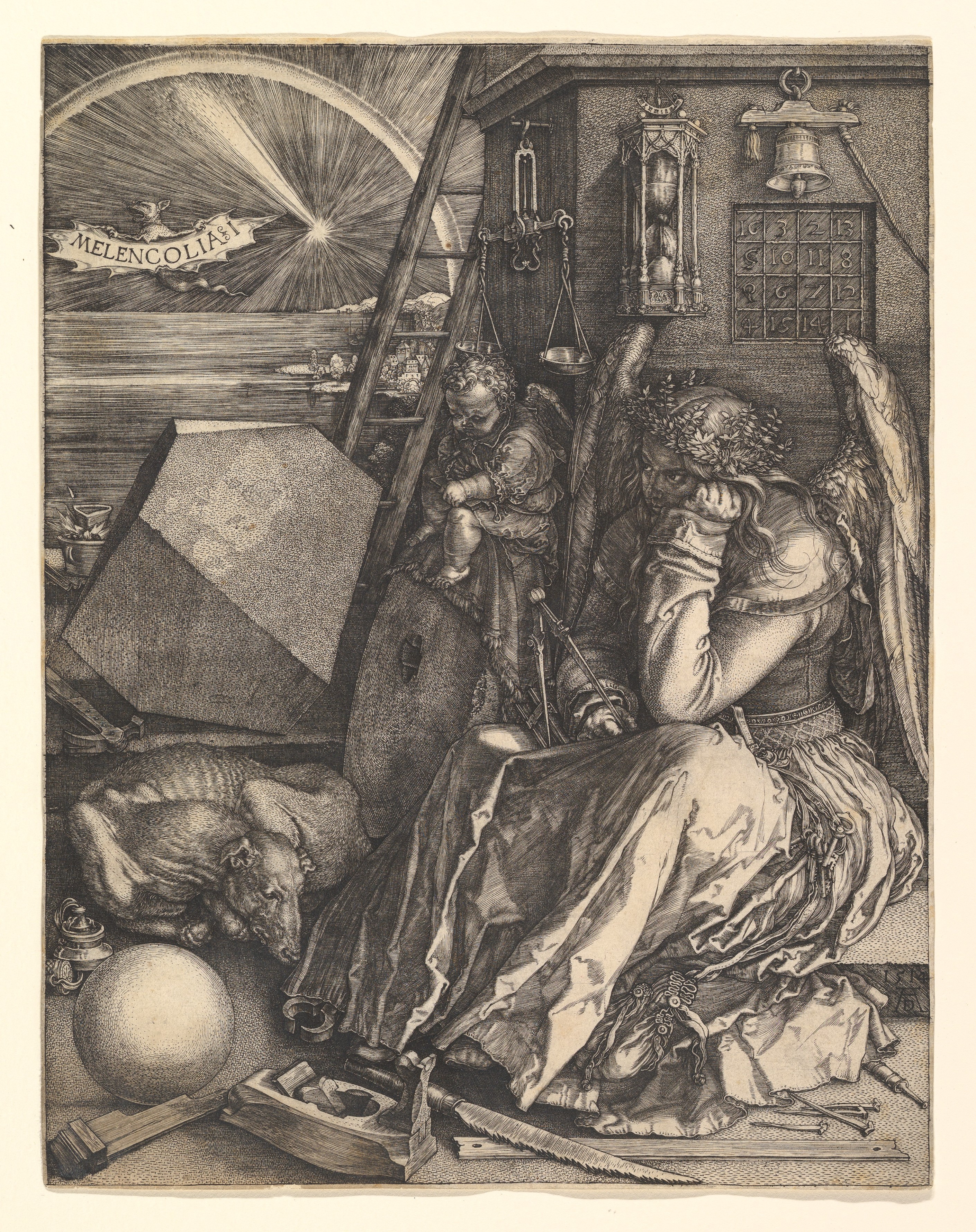
The second movement, a slow Adagio non troppo, is in many ways the heart of the symphony. As in the first movement, the cellos play an important role. They begin the movement with a kind of music half-way between singing and speaking, like an operatic arioso. Their soliloquy begins with strange, murky harmonies, but soon opens up with more lyrical phrases (given Brahms’ reputation as a gruff character with a heart of gold, it is tempting to hear this cello line as a self-portrait).
The violins begin to echo the soliloquy, but it soon gives way to distraction—the melancholy, wavering voices of horns and woodwinds interrupt. The cellos, however, reassert themselves with a fragment of the soliloquy, which leads to a contrasting second theme for woodwinds. Marked “L’istesso tempo, ma grazioso” (“the same tempo, but graceful”), this gently swaying theme in 12/8 features gentle syncopations and a relaxed atmosphere.
A transitional passage for strings soon morphs into a brief but intense development that climaxes with an ominous trombone playing an inversion of the opening three notes of the symphony. The soliloquy attempts to begin again, but the trombone interrupts it. The soliloquy then returns in a fragmented form, but ultimately transforms into one of the most beautiful passages Brahms ever wrote as the violins complete it, reaching higher and higher.
The graceful second theme does not follow, however; this time, the worrisome transition leads to a second development even more intense than the first. The movement then fades away amid the murky harmonies of the beginning of the soliloquy.
Last Dances
All shadows are banished in the third movement—the trombones and tuba remain silent as well. Organized around an ABACA structure, it begins with a graceful, landler-like main theme for oboe. This tune’s typically Brahmsian subtlety and sophistication belie its naïve, folksong character; its shifting harmonies have prompted comparisons with the Slavonic Dances that Dvořák had composed earlier the same year.
This main theme alternates with faster contrasting sections, the first of which is a sped-up version of the opening theme in duple meter:
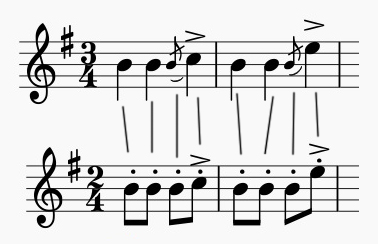
The Mendelssohnian fast sections have a mischievous—perhaps even supernatural—character, especially the playful grotesquerie of the woodwind parts. It is easy to imagine a Hexentanz (witches’ dance) deep in the forest. Brahms’ transitions back to the main theme are particularly masterful, and the theme is subtly varied with each reappearance. This enchanting movement proved especially popular with Brahms’ contemporaries—it was even encored at the premiere.
The finale has been frequently described as a Kehraus—the traditional “last dance” at the end of a ball. Brahms begins by retelling an old but well-loved musical joke: the strings’ sly whispering theme grows softer and softer until the entire orchestra erupts in a jubilant forte. A solo clarinet leads the transition to the warm, rich second theme, and the orchestra rounds out the exposition with rhythmic and metrical games (including a brief excursion into quintuple time).
We seem to return to the whispering main theme for an exposition repeat, but the music soon fragments, drifting into darker, minor keys for a developmental section. After a more intense passage, the music slows for the hazy harmonies of a passage marked tranquillo (tranquil). The music becomes quieter as the trombones and tuba return to play mysterious lines, but any suspense evaporates when this passage reaches its destination: the return of the whispering opening theme.
After a reprise of the movement’s main ideas, the music suddenly turns to D minor as the low brass reenter, beginning the coda. Passing through several keys, this unstable music seems to be turning into a second development section, until it comes to a halt with three chords harmonically similar to the ones played by the trombones at the beginning of the symphony. The mysterious tranquillo music now returns at full speed, rising higher and higher, until we arrive at what musicologist Donald Tovey famously called “the blast of the trombones.” After having played a menacing role throughout the symphony, the low brass at last join the orchestral merriment, giving their benediction to the general rejoicing. The movement then races to one of the most ecstatic conclusions of any symphony.
Don’t miss Brahms’ Symphony No. 2 on November 15, 16, and 17! Learn more & get tickets.

